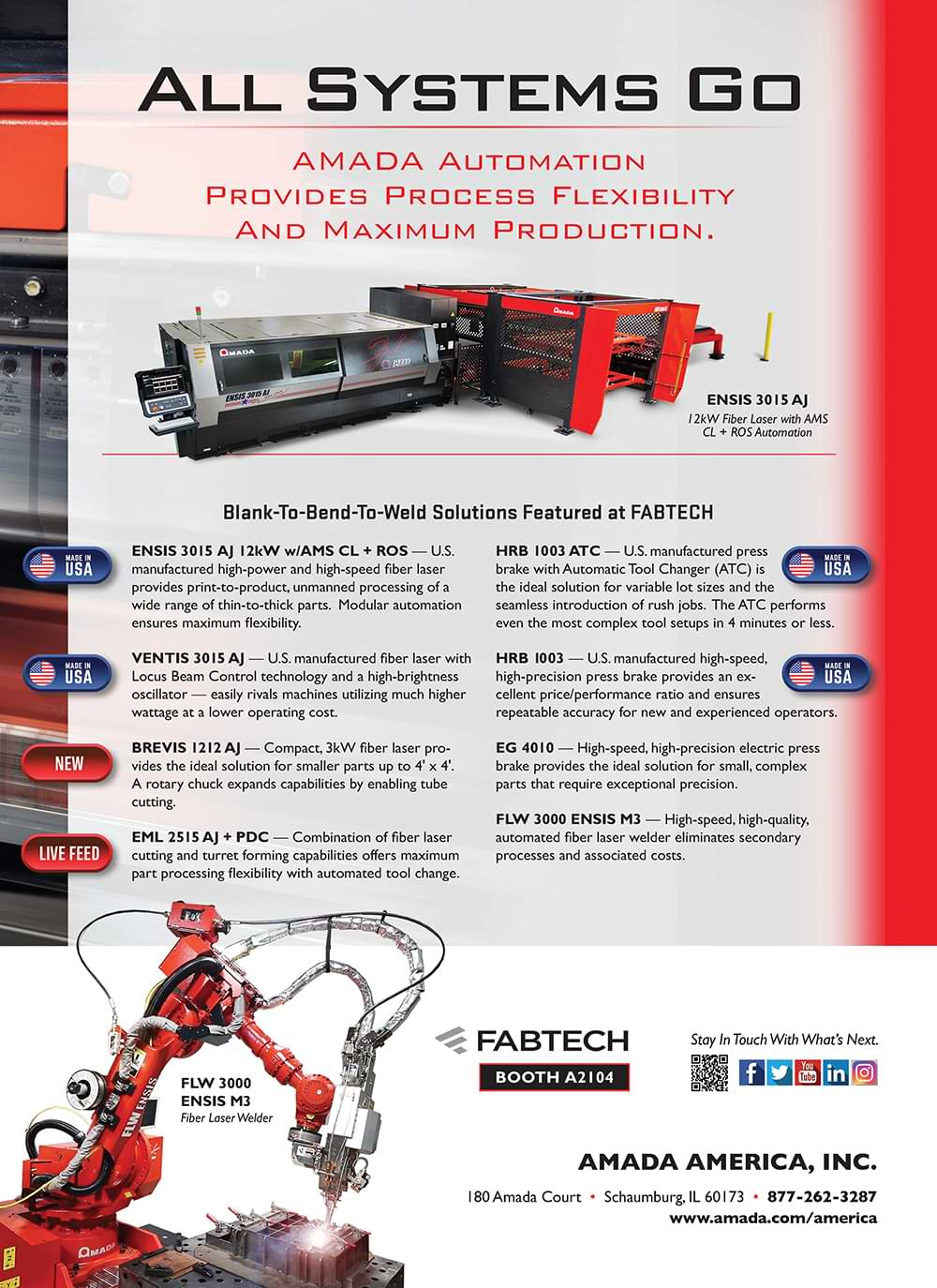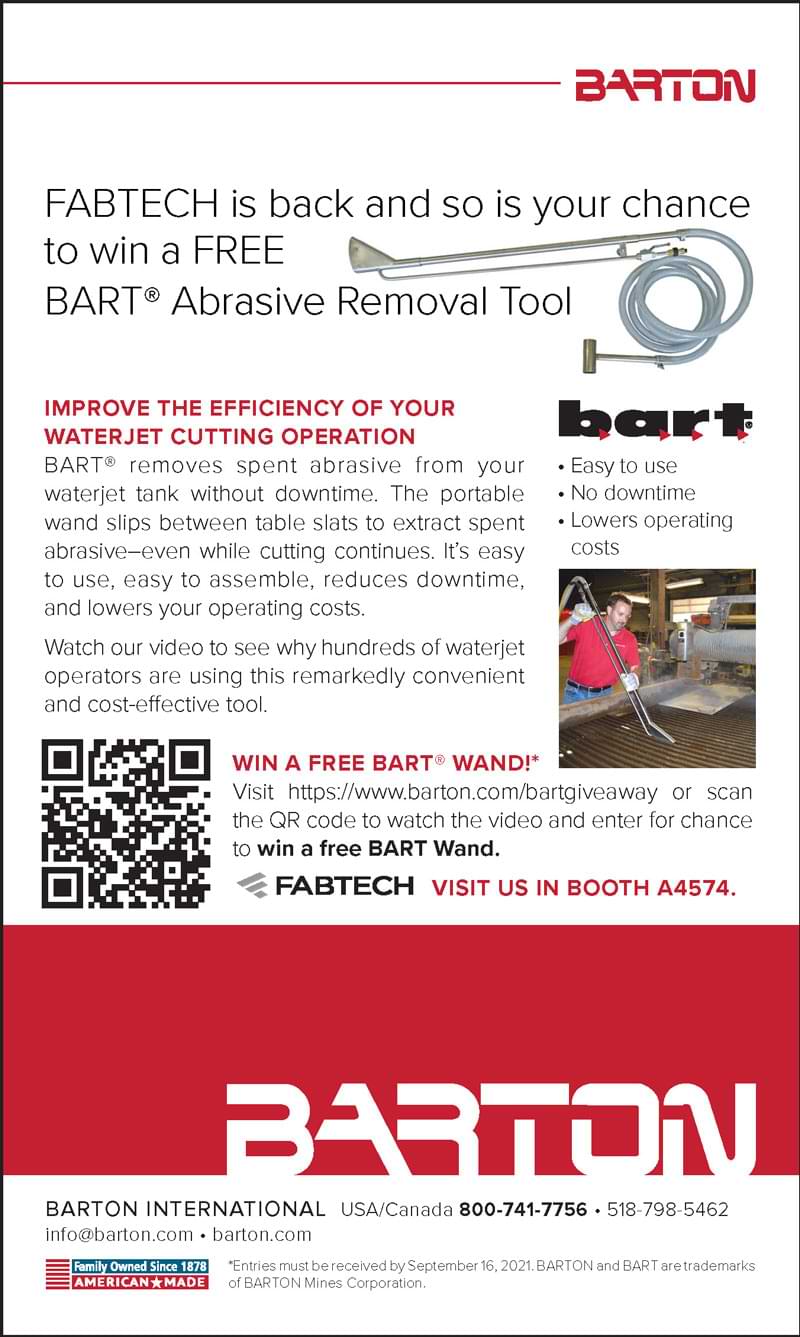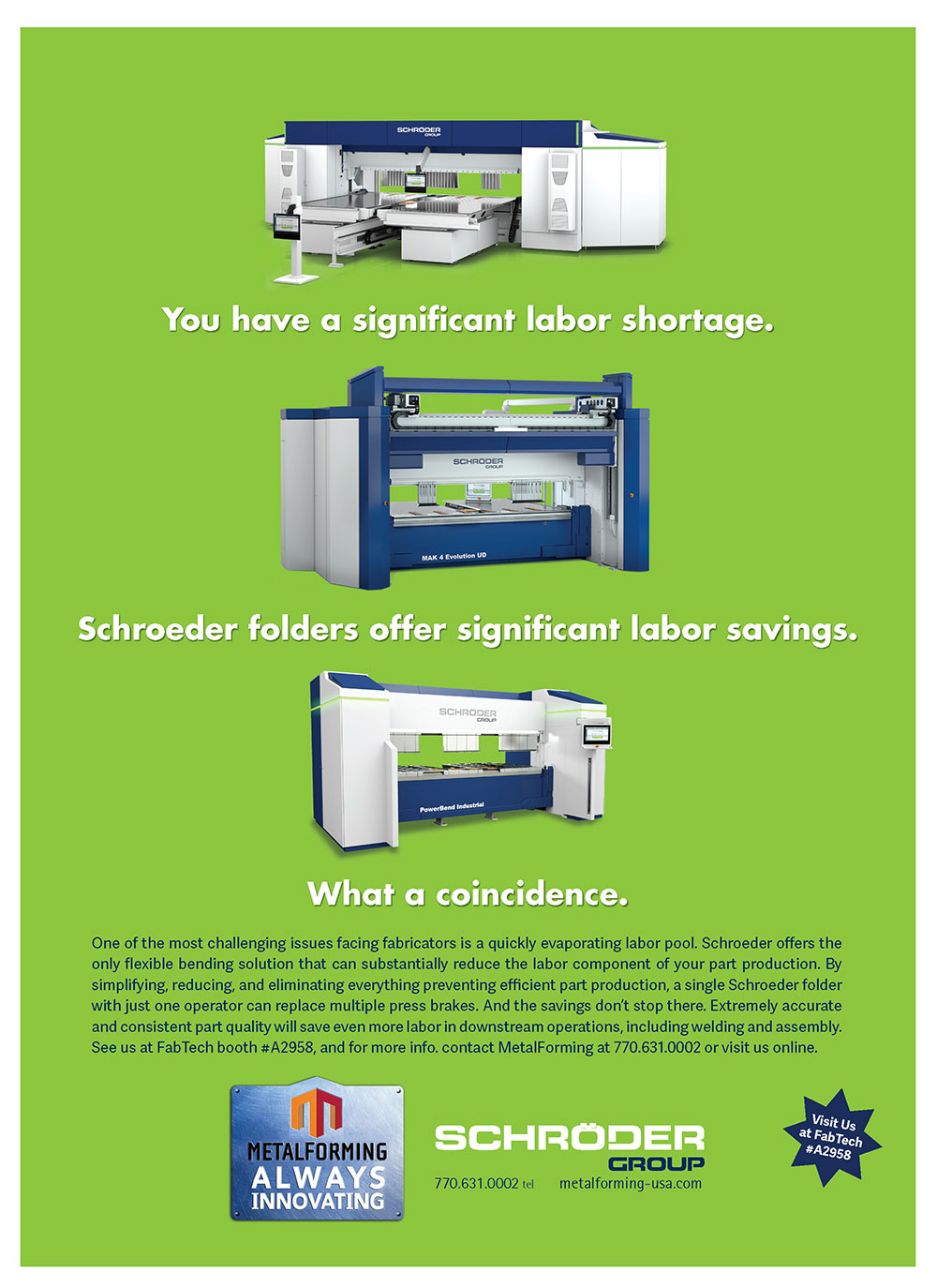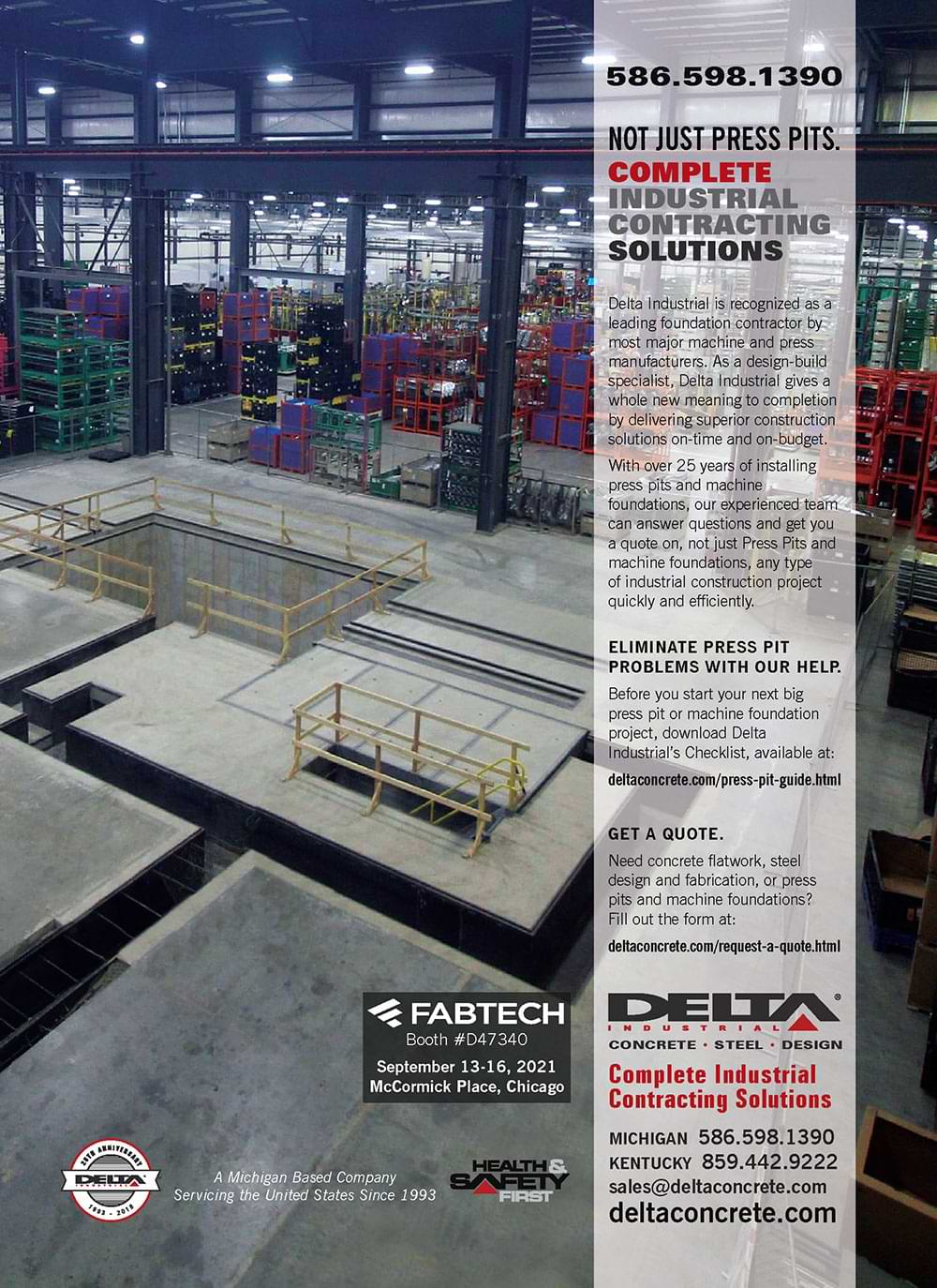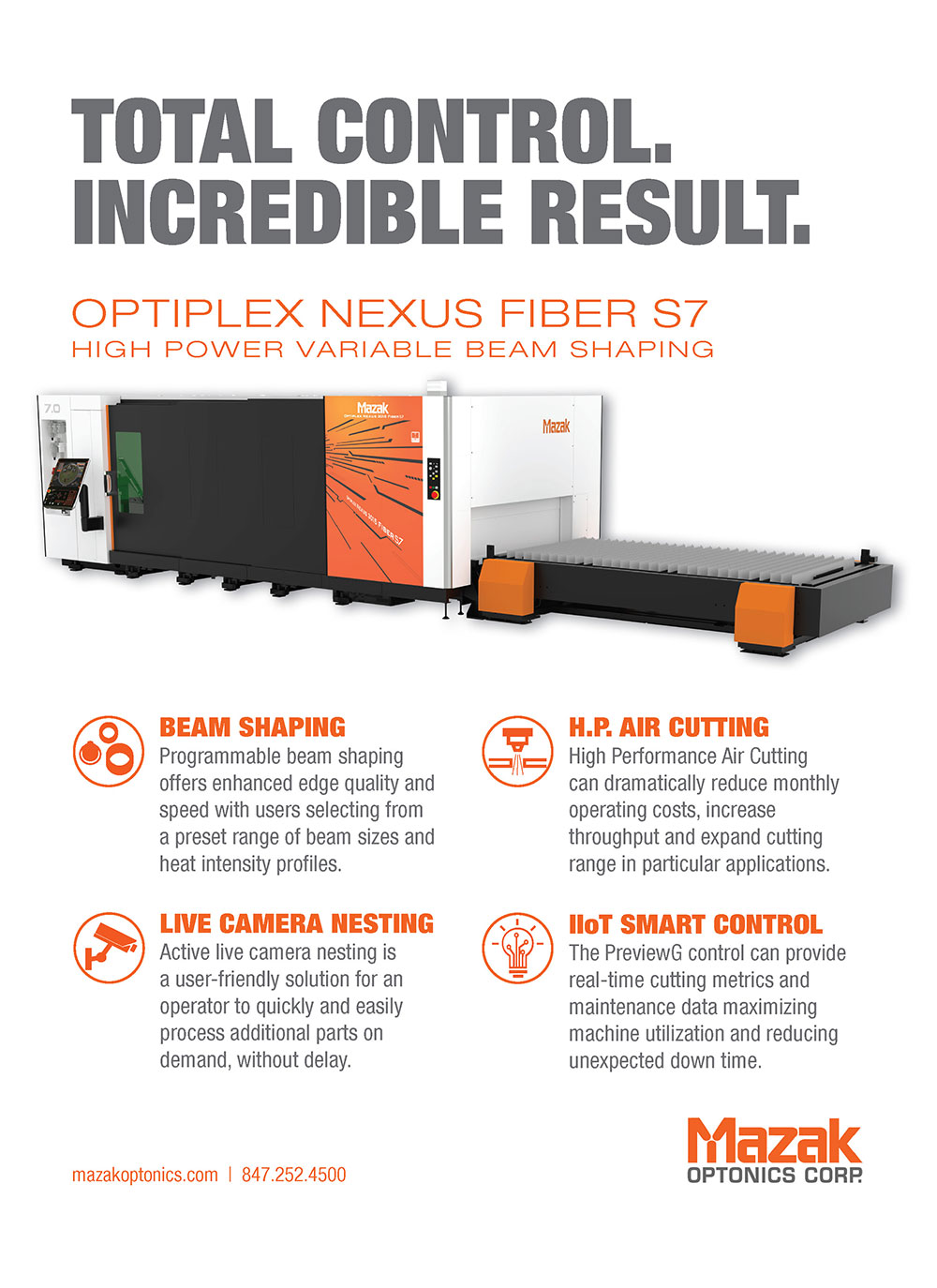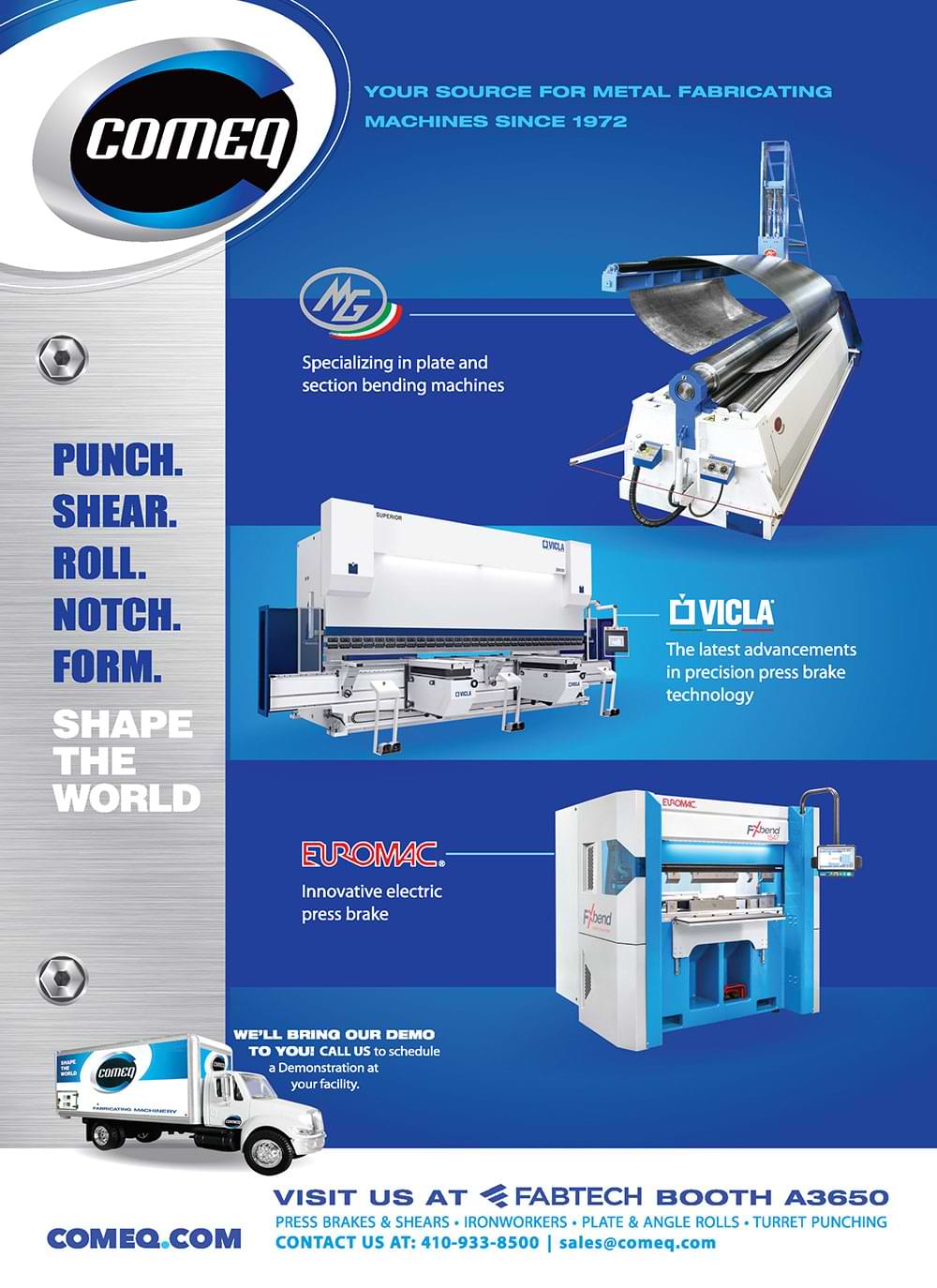Fabricators
Fabricators
abricators network, share articles, listen to podcasts and follow social platforms to find out what others are working on, many with the ultimate goal of attempting a project on their own. Wielding a welding torch can seem daunting to a novice fabricator, but a simple internet search can give a would-be metalworker access to educational resources for any level of experience.
“For every eight- to 10-minute video, there is more than 40 hours spent from writing to editing, to the amount of work invested to get the crowd engaged—that’s 40 to 50 hours for an eight-minute video that people might completely ignore,” says Justin Merrill of the popular YouTube channel, The Fabrication Series. “Whether I love or hate the video content doesn’t matter, you’re at the mercy of the crowd.”
 I realized there were a lot of videos, [but] not an explanation behind how to do things.
I realized there were a lot of videos, [but] not an explanation behind how to do things. 
Justin Merrill
 I realized there were a lot of videos, [but] not an explanation behind how to do things.
I realized there were a lot of videos, [but] not an explanation behind how to do things. 
Justin Merrill
 I realized there were a lot of videos, [but] not an explanation behind how to do things.
I realized there were a lot of videos, [but] not an explanation behind how to do things. 
Justin Merrill

Fifteen years building cars is behind the expertise that draws more than 436,000 subscribed viewers to Merrill’s The Fabrication Series videos on YouTube. “I realized there were a lot of people putting videos up, but there wasn’t a lot of explanation on how to do things. It was more like this is how you replace your brakes and voila, it’s just done without really going into the how part of it,” Merrill says of his channel, which launched in 2015.
After an injury prompted him to retire from his full-time job, Merrill realized he needed to keep busy. “I decided to start making videos about things I find interesting,” he says. “If you’re interested in learning about how to TIG weld a roller cage, here is how it’s done, step by step.”
His foray into producing videos led to a full-fledged business. “I may have started The Fabrication Series to keep away boredom but we always treated the channel like a business,” Merrill says. “Whenever I give anyone trying to launch a channel some advice, it’s always to have a plan.”
Merrill’s plan includes creating content viewers are interested in watching. “You don’t want to go off the deep end with content only a few people want to see, so we focused on what people wanted to learn and worked to make each video as detailed as possible.
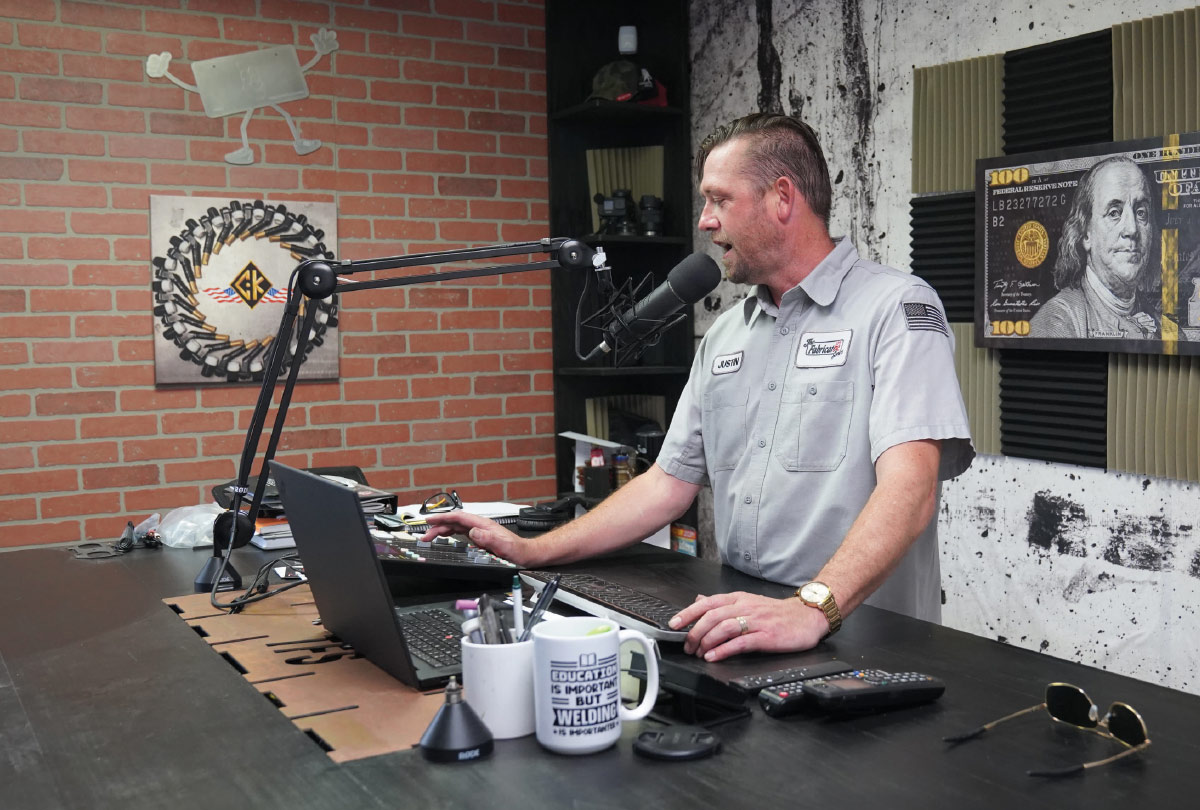
Videos segued into an e-commerce site: weldmetalsonline.com, where Merrill works with sponsors as well as sells materials so viewers can recreate the projects at home. “Sponsors started sending me metal to use on my videos and I thought about how helpful it might be if people could purchase all the material they’d need for a specific project at once,” he says. “So my brother and I began selling kits for specific projects.”
The Fabrication Series is gearing up for an in-person opportunity to meet viewers at Fabtech at booth B25034. “I’m someone from YouTube, and now I have a booth at a trade show on the main floor,” Merrill says. “It’s just another example of how we are evolving. Our goal is to get to more people out there, to continue opening up the industry to show people this is what you can do and be able to create and connect to people. It’s a great feeling.”
 I want viewers to be able to follow along step-by-step and by the end, have a really good grasp of what I did.
I want viewers to be able to follow along step-by-step and by the end, have a really good grasp of what I did. 
From job shop to real life: Pickel customizes vehicles, then takes them off-road to stress test.
 I want viewers to be able to follow along step-by-step and by the end, have a really good grasp of what I did.
I want viewers to be able to follow along step-by-step and by the end, have a really good grasp of what I did. 
From job shop to real life: Pickel customizes vehicles, then takes them off-road to stress test.

In 2019, Pickel decided to film his vehicle fabrication projects and upload them to YouTube. “I started Dirt Lifestyle, and enough people liked watching my videos that within six months I was able to focus on my YouTube channel as a full-time job,” Pickel says.
Pickel works with his wife on the channel. The shift from a steady and reliable job as a plumber to a YouTube video creator was not taken lightly. “I have two very young kids, but with 15 years established in my trade as a plumber, I knew I had to try making this work. I love making videos and sharing with people,” Pickel says. “I knew that if my YouTube attempts failed, I’d have a solid career to fall back on, but I had to give it a try.”
Viewers watch Pickel fixing vehicles followed by off-road testing. “I see where the weak points are. I buy rigs and then test them,” Pickel says. “I build things based on need, and after driving it, I know what I need to change. A lot goes into suspension theory, tuning—we take that application from the shop and put it out into the field. We find out what didn’t work and then go back to the drawing board. The channel is just building stuff and changing things as they need to be along the way.”
Quality and attention to detail are Pickel’s goal. “I want viewers to be able to follow along step-by-step and by the end have a really good grasp of what I did—I don’t want to create poor quality videos and do a bad job teaching,” he says.
Pickel’s videos are entertaining with an emphasis on storytelling. “I personally never learned well from someone just standing in the front of the class talking,” he says. “There needs to be a story—a variety of camera angles in this case. I’ve always loved history, but if we were just assigned to read out of a book, I wouldn’t get absorbed in it.
“A movie, or something interactive, made it more real for me,” he continues. “I want to offer that viewpoint to my audience and help them find fabrication entertaining while they learn. I think that’s what makes the channel popular.”
 My motivation wasn’t necessarily to inspire so many other people, but that’s what it’s turned into. It’s pretty incredible.
My motivation wasn’t necessarily to inspire so many other people, but that’s what it’s turned into. It’s pretty incredible. 

What started as a journaling of time spent working on projects with his children morphed into a wider audience of subscribers and interested fabricators. “My kids got older and had other interests and, meanwhile, the channel took off. It changed direction as I worked on projects viewers wanted to see,” Lund says.
Lund started his YouTube channel in 2016, but it really took off in 2018. “A lot of people watching are new to welding,” he says. “I make sure to talk about every step from how to set up the welder and what safety precautions you need to take—those are all important pieces that sometimes are forgotten but should be incorporated into each video to help people just starting out.”
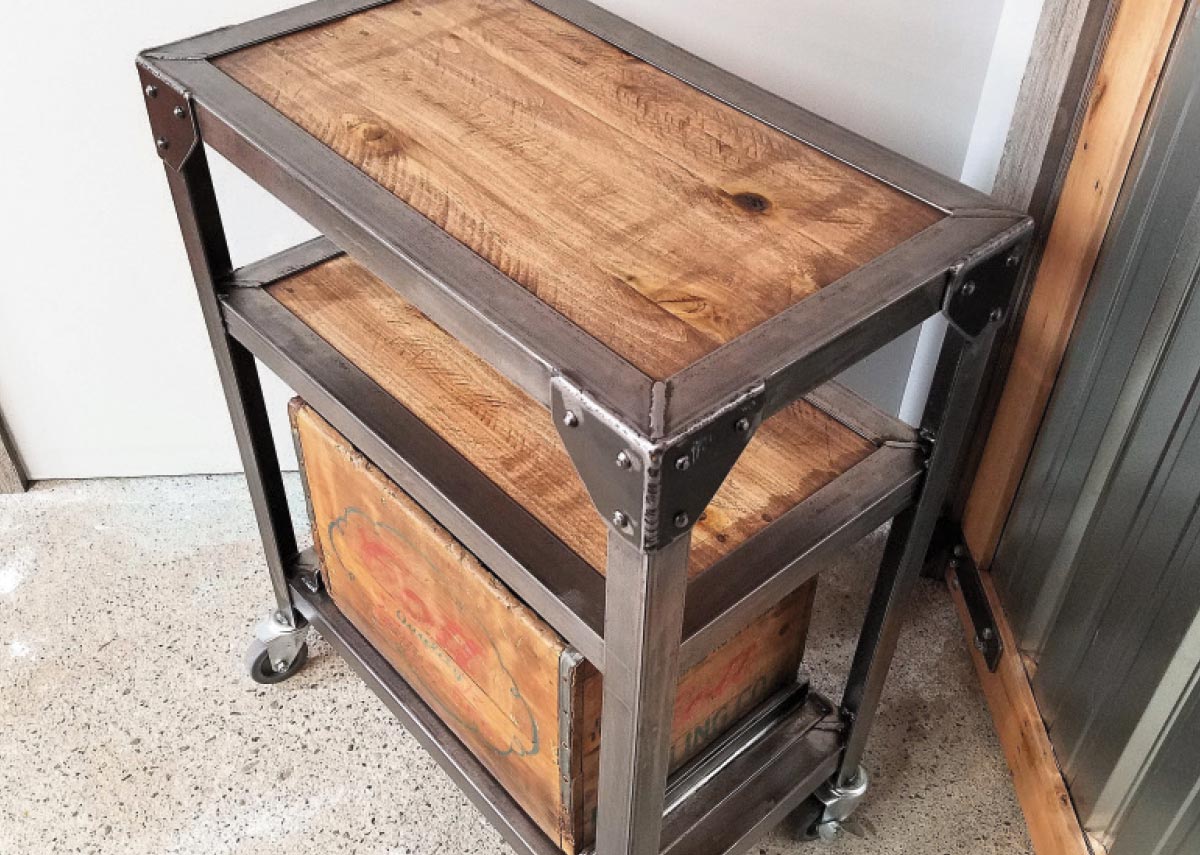
The results of the bench video led Lund to research welding cast iron further. He decided to film a cast iron welding series.
“The series became really popular and got my channel off the ground because there is so much myth and everyone is deep-rooted in believing something can only be done one way,” Lund says. “But then people would pop up in the comments and say they were able to do what I did, too. Then the conversation shifts to what kind of equipment is needed and I’ll post other primitive testing methods. [The cast iron video series has] opened up a whole line of engagement into repairing cast iron.”
Lund’s channel has evolved into a full-time living despite having a full-time day job. “But I don’t look at it as a job,” he says. “I enjoy doing it but it’s a lot of work. I’ve been welding since I was 14 years old, I’m 50 now. When I started out, I had to find a class or read a book, but now there are vast resources and so much information available online.”
A combination of entertainment and helpful skills are what keep Lund’s viewers interested. “A coworker of mine has a son in Alaska. One day, she showed me a video he sent her of the instructor using one of my YouTube videos as an example for their welding class,” Lund says. “That is pretty cool.”
 It’s a delicate balance, between trying new things while not losing sight of what interested viewers in the first place.
It’s a delicate balance, between trying new things while not losing sight of what interested viewers in the first place.
Justin Voss
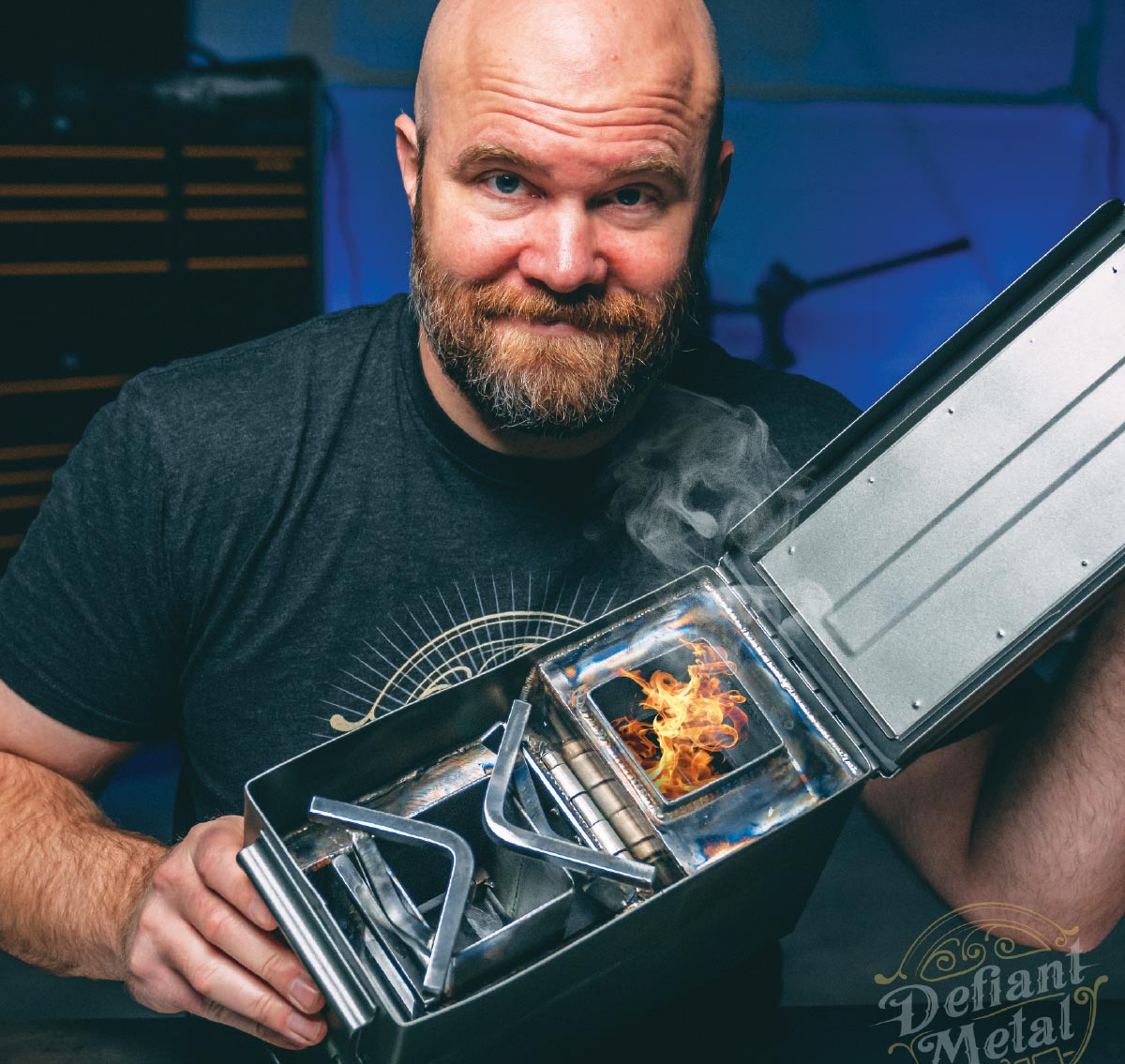
 It’s a delicate balance, between trying new things while not losing sight of what interested viewers in the first place.
It’s a delicate balance, between trying new things while not losing sight of what interested viewers in the first place.

Voss began his online presence by starting a vlog (video blog) and created some podcasts centered on the racing world. “My vlog became popular, and I focused on NASCAR and the racetrack for awhile,” Voss says. He filmed during lunch while in the race shop and completed small welding projects.
Voss left the race shop to be on the pit crew full time and found a small shop to rent to continue filming videos for YouTube. His next task was deciding what types of projects would engage his audience. Voss pictured his viewers at home in their garages and realized there were a lot of people working on personal fabrication projects on their own time. He also focused on maintaining a high production standard.
“I like to keep the audio good, show good arc shots and not shoot something boring. I think my viewers notice the difference,” he says. With more than 76,000 subscribers, his attention to detail is garnering results. “I have a lot of knowledge and I want to try and have that crossover into my videos.”
Voss uses a 3D printer and also incorporates woodworking into his metal creations. While he tries to change up the subject matter, he stays true to his fabricating roots. “I had some popular camping videos—fabricating and using charcoal grilling and camping stoves—and those got a lot of views, but I don’t want to veer too far off topic and lose my fabrication-interested viewers,” Voss says. “It’s a delicate balance, trying new things while not losing sight of what got viewers interested in the first place.”
Other than practicing for his pit crew duties, Voss spends his days at his shop filming. He plans to continue to grow his YouTube channel to demonstrate different skills and equipment. “I want to inspire people to make stuff for themselves, out of metal,” Voss says. “I want metalworking to be less intimidating. Once you get a grasp of the basics and can melt metal together.”


The Germany-based YouTuber has a growing presence with his well-timed sequence of steps from setup to finished weld. Ahrendt grew up around sheet metal in his grandfather’s shop. “Even as a young kid, I always knew what I wanted to do,” he says. “That’s how I started my career. I worked at a company that did cladding and facades all over Europe, including a couple of years in London and a year in Spain, and now I’m back in Germany.”
 I try to use simple tools that anyone can find. I want people to watch my videos and do what I do.
I try to use simple tools that anyone can find. I want people to watch my videos and do what I do. 
What started as a side hustle to earn some cash is now a serious endeavor for Ahrendt. “I used to watch YouTube videos during my ride in to work,” he says. “I figured I’d learn something new. After awhile I realized I could do this too.”
He began filming and testing projects. “YouTubers make it look easy but I realized it’s hard in the beginning because it does take a lot of time and no one is watching,” he says. “It took about nine to 10 months until I got 1,000 subscribers—but I was pretty excited about it. Since then, commenters have been motivating me, and I even had some interest from larger channels.”
Ahrendt’s distinctive style splices to gether each step of the project without narration. “I filmed it how I like to watch YouTube clips,” he says. “Sometimes you’re sitting on the bus or subway or you’re watching your phone while sitting in front of the TV and you don’t want the [sound] disruption from your phone.”
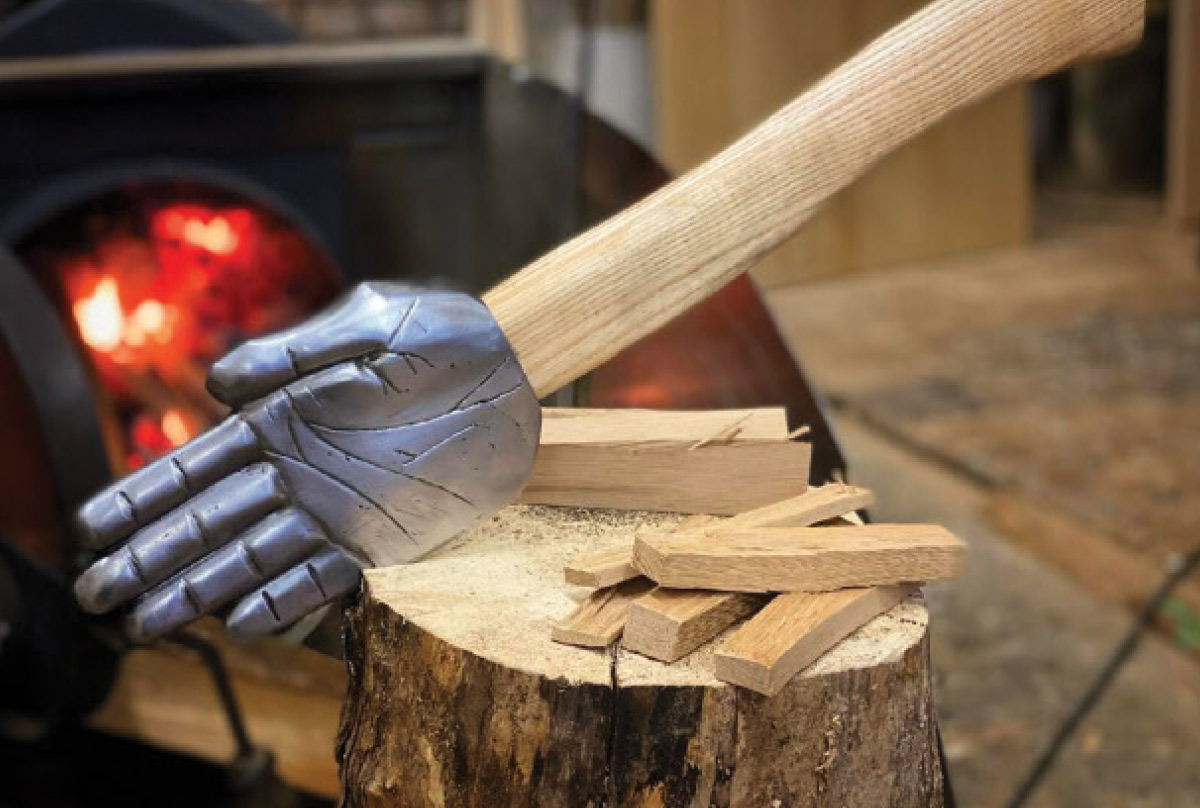
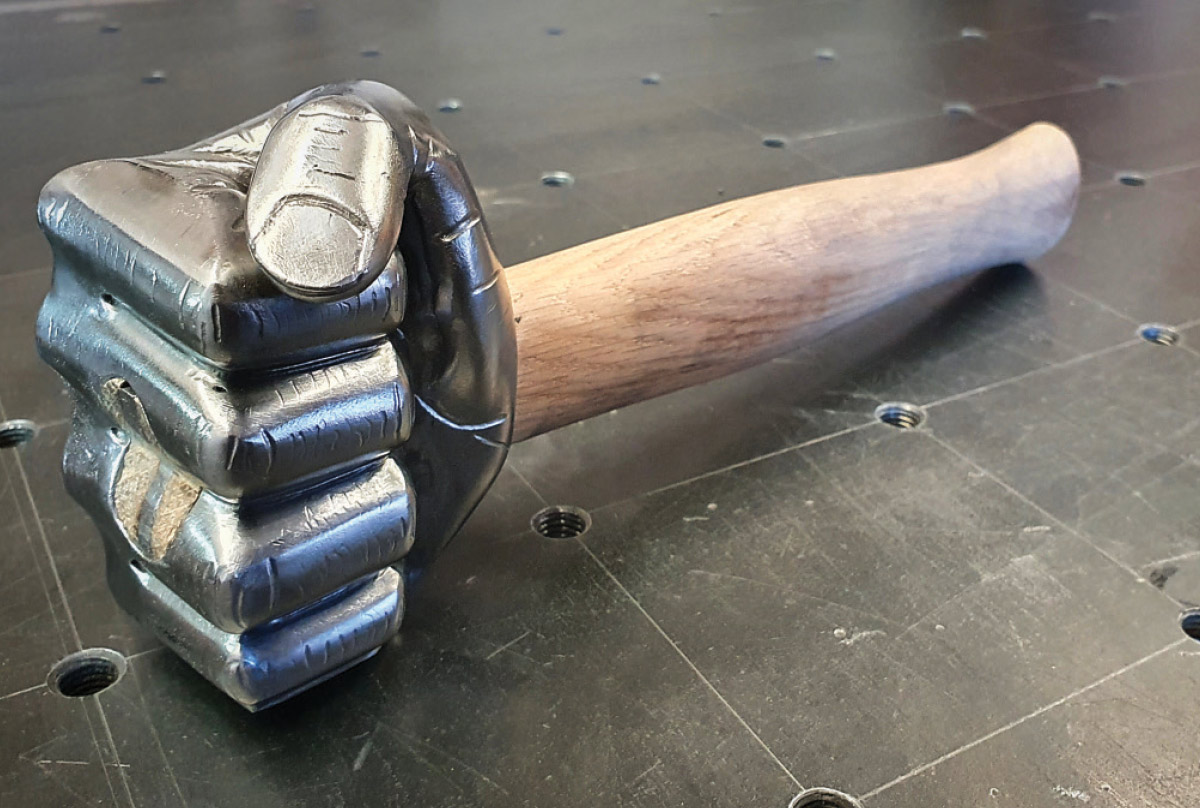
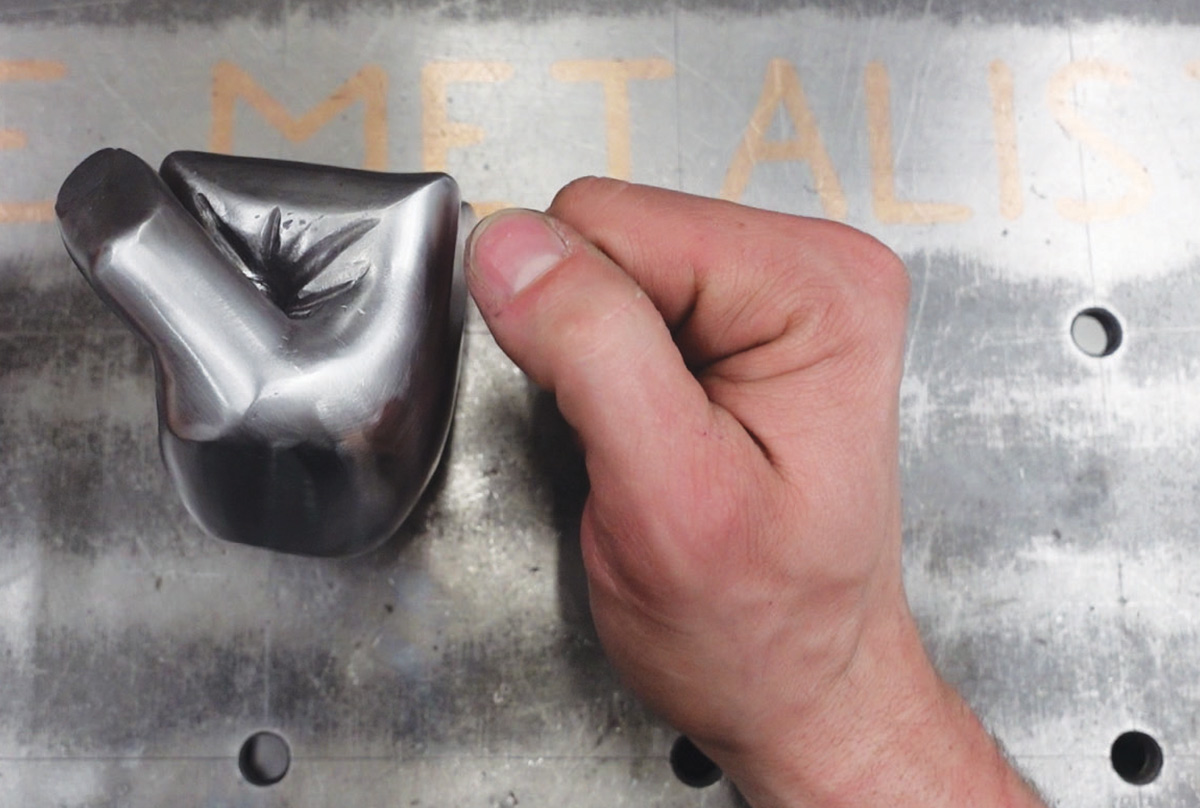
Ahrendt continues to plan and film videos in his workshop and has plans to trade in his 14-ft. by 14-ft. space for a larger one he’s building alongside his newly purchased home.
“The space works for now but I’m excited to really build up my own workshop at home,” Ahrendt says. ”My goal is to make one-of-a-kind videos in as simple a way as possible. I try to use simple tools that anyone can find. I want people to watch my videos and say to themselves, ‘hey, I can do that too.’”
